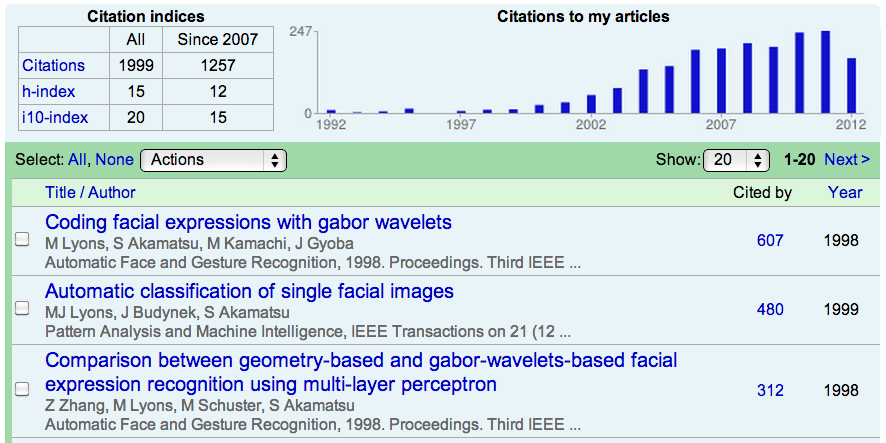I recently noticed that the number of citations to my published work had reached 1999. Profs in Canadian universities typically have several hundred to several thousand citations. It seems to be less common for profs in private Japanese universities to have a substantial citation rate. Japanese profs with some well-cited publications are more usually located mainly in the (former) National universities or National research institutes. There are some outstanding researchers to be found in places like Todai.
Researchers care about citation rate because it is a measure of the impact their work is having on the research community. Influential work tends to be cited more often. If you want a quick estimate of the impact a prof has made on knowledge, you can easily check to see if any of the work they have published has been frequently cited. The most commonly used index, for several years now, is Google Scholar. The reach of g.s. is global and it is not restricted to publications written in English, but indexes works in the languages of contemporary scholarly activity (Japanese included). Currently, researchers interested in contributing to world knowledge write some (or all) of their articles in English.
Citation rate has been used for many years in most universities and research institutions to make decisions about hiring and promotions. This is somewhat true in Japan too, more commonly in the research-intensive (former) National universities. Research impact, as measured using citation rate has also been used to rank universities and research institutions. Try searching Google Scholar for Harvard University, M.I.T., or Caltech. Now try Ritsumeikan. Interesting (or maybe not)? You can (roughly) estimate the knowledge output of entire cities this way: try out London, Paris, Tokyo, or Kyoto.
Google Scholar can provide insight into a given researcher’s most influential work. In my case, so far our work on face and facial expression classification has had the largest impact. As it turns out, we were the first to study the use of wavelets, a special kind of mathematical function, for processing facial expressions. This subsequently became a popular approach to analyzing facial expression images. I heard from a researcher inside one of the largest global media and electronics companies that ‘smile shutter’ technology was influenced by this research. Indeed, the work was demonstrated to that company (which I won’t name, but you can probably guess) and the other major consumer electronics companies in the mid-nineties. That said, I don’t think automatic smile detection was a particularly interesting application of the work. I am much more interested in the fundamental scientific aspects of the research.
So, how to do work which will be frequently cited? Simple – do cutting edge original work in an interesting field and publish it in a leading peer-reviewed journal or conference. The skill is in knowing where to cut the edge. That was Peter Medawar‘s idea about the art of doing science.
Another way to have frequently cited papers is to frequently cite them yourself. There’s no rule against it, but excessive self-citation is something like masturbating in public because it’s trivially easy to spot this behaviour on the various citation indices. It would be easy enough to link to a few examples of colleagues who don’t seem to be shy about having a lot of self-stimulated citations.
Citation rate may be important but it is not everything: my favourite works, on musical interfaces, and visual perception of art, are less highly cited than the face classification work, though, when published, some of these works did attract attention by the popular mass media. However, the single most influential thing I have done in my research career – organize a workshop held in Seattle in April, 2001 – barely hits the radar on Google Scholar.
For most people, the best ways to do influential work is to collaborate with others who have shared interests and complementary skills. I rarely work alone and that applies to all the work I’ve mentioned above. It’s much more interesting and productive to work with another person or a small group.

